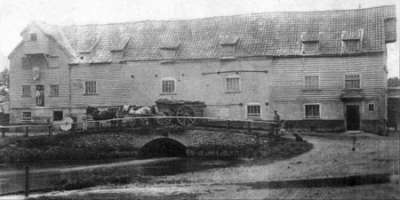 |
|
c.1880
|
|
Lenwade Mill
River Wensum |
 |
|
c.1880
|
|
Although Lenwade
mill is on an ancient site the present building is relatively new. The
previous weatherboarded mill burnt down in 1888 and J. James Sayer replaced
it with the current brick building and a slate roof in 1890. The mill
cost £900 to build and the mill house a further £250. It was
probably in the 1950s that the walls were rendered white to the style
so familiar to all that know the area. The boarding of the lucums was
unusual in that it was set vertically. |
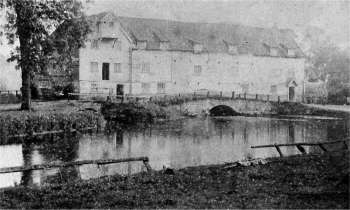 |
|
c.1870
|
|
During the three years covered by my The Diary of James Woodford Vol. 10 1782-1784, Parson James Woodforde deals with various mills and millers, selling barley to John Clover of Marlingford_Mill and wheat to Daniel Bloom at Trowse_Mill but most of his dealings are with his nearest mill at Lenwade. Woodforde's earliest encounter with Peter Forster as the miller at Lenwade was on 29 June 1784. Prior to that date, the miller there was Robert Beeston. Woodforde sells him wheat and buys flour from him. Beeston married the recently widowed Martha Kerr on 24 April 1783 and two months later on 26 June he held an auction at Lenwade Bridge Inn. Woodforde paid a last bill to him on 13 December 1783. It rather looks as if Robert Beeston left Lenwade as a result of his marriage. |
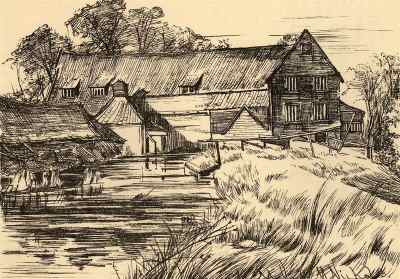 |
|
Drawing of the mill dam by Catherine Maude Nichols c.1886
|
|
The Forster family would often buy contraband from smugglers on their way inland from the North Norfok coast. The family used to store smuggled tea in a copper coalscuttle that had been passed down through several generations. |
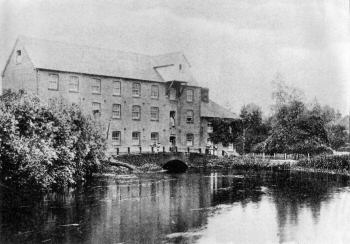 |
|
c.1905
|
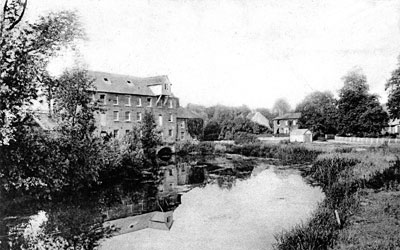 |
|
c.1908 |
|
The
flour machinery was taken out in about 1948, although the turbine and
diesel engine remained. At this time the main motive power was switched
to electricity to drive the new animal feed production line. The wheat,
barley and oats came from British farms while the protein ingredients
such as soya, sunflower, groundnut and fish meals mostly came from abroad.
|
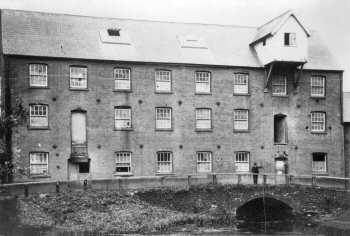 |
|
1918
|
|
James Sayer's decision to take over and rebuild Lenwade mill was greatly influenced by the healthy profits produced by his son Robert who was running the nearby Elsing mill and returning a surplus of £500 per annum. |
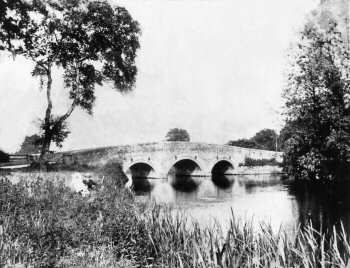 |
|
Lenwade
bridge c.1910
|
|
A new road bridge over the Wensum carrying the A1067 was built in about 1927 on the mill side of the earlier smaller bridge, which was demolished some years later. |
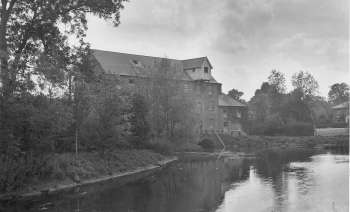 |
|
c.1920
|
|
Peter Forster
was miller in the last half of the 18th century and occasionally bought
corn from Parson Woodforde (who had also been known to purchase kegs of
contraband spirit). However most of Parson Woodforde's grain ended up
at Trowse mill, while most of his flour purchased
for domestic use, came from Lenwade mill. Peter Forster was generally
on good terms with James Woodforde and would send him gifts of eels, Yarmouth
herrings, Colchester oysters, etc. May 20 - 1786 Oct 13th 1787 Dec 21st 1797 |
Such persons as stand indebted to the Estate & Effects of Dennis Wright of Saxlingham in the county of Norfolk, Miller to pay the same to Mr. Wright, Caldecote, Mr. Beverley, of Tibenham, Mr. Forster at Lenwade Mills in Norfolk, at the Mills at Saxlingham or to Messrs. Foster, Son & Unthank, Norwich otherwise they will be sued. |
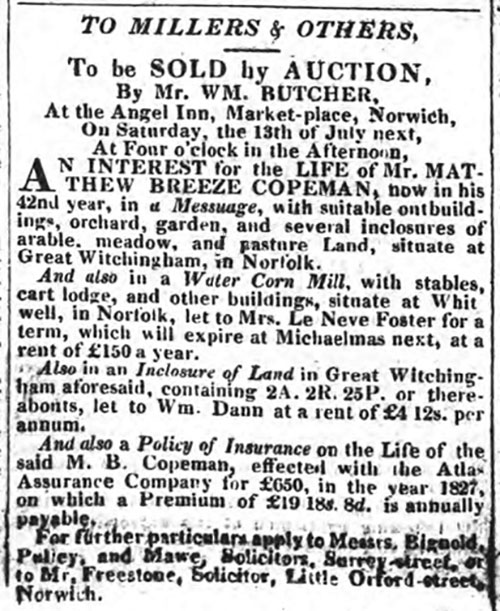 |
|
Norfolk Chronicle - 6th July 1833 |
|
A new road bridge over the Wensum carrying the A1067 was built in about 1927 on the mill side of the earlier smaller bridge, which was demolished some years later. |
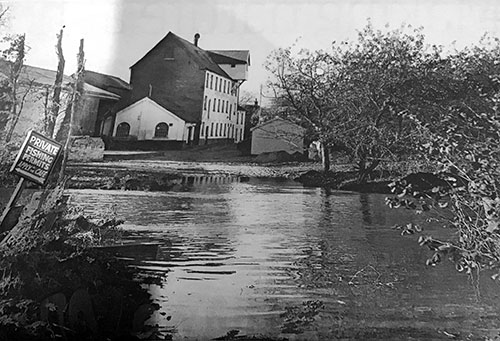 |
 |
|
1954 |
c.1960 |
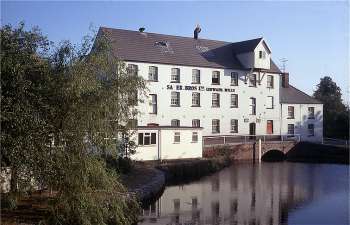 |
June 1973 |
|
In 1969 Sayer Bros. became part of J. Bibby Agriculture Ltd. of Liverpool. However Sayer Bros. continued to manufacture pig and poultry feed for which they had become famed, having pioneered the bulk feed delivery system in this country. |
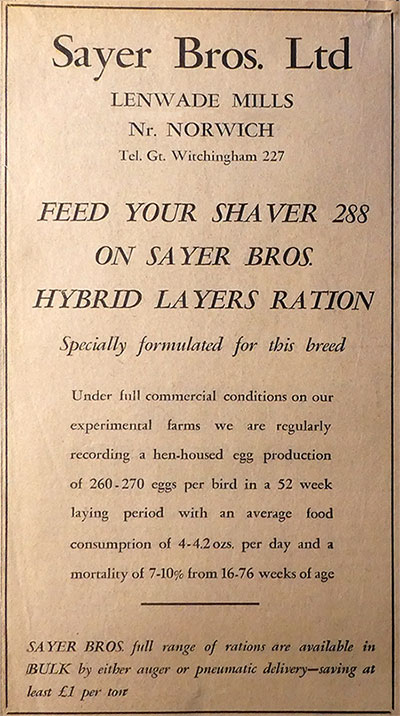 |
|
Eastern Daily Press advert c.1967 |
|
Production at the mill continued until 1984 after which the mill remained empty for 10 years before being advertised for sale for £150,000 and then sympathetically developed into luxury homes. |
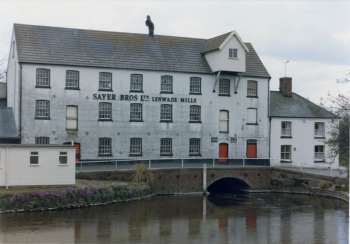 |
|
24th
April 1977
|
|
Lenwade Mill was built in the late 18th to early 19th century and it was the first producer of electricity in the area. |
|
Homes plan for crumbling mill |
A scheme to turn a crumbling Wensum valley watermill
into luxury homes has been approved by planners. The 19th century Lenwade
Mill, above, on the A1067 between Taverham and Bawdeswell, is Grade II listed
and was placed on Norfolk Historic Buildings at Risk Register. Now developers Alexander James and Partners plan to transform it over the next 18 months into upmarket homes worth more than £200,000. The site has been boarded up for the past 15 years and a variety of projects have been put forward to bring the buildings back into use. Now the mill itself will be converted into two high quality homes overlooking the mill stream, which is famous for its fishing. The well-known facade will be restored to its original state and the machinery which is still in working order will be left on the site. A granary on the site will be divided into four homes. The Norfolk Society and the Norfolk Windmill Trust applauded developers for their sympathetic conversion plans. Stephen Wood, part of the development partnership, said: 'The front, which people know so well, will hardly change at all. There are one or two bits that have been added which we will remove and put back the way it was. 'We found some old photographs and researched it as far as we could, but we basically knew what it should look like.' Norfolk Now - 8th June 1999 |
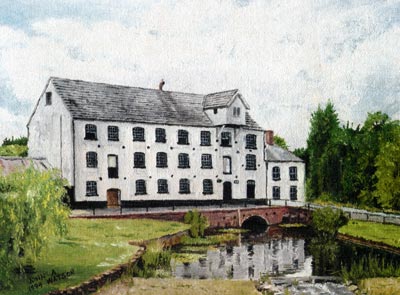 |
Watercolour by John Watson 1994 |
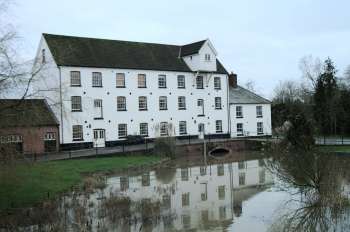 |
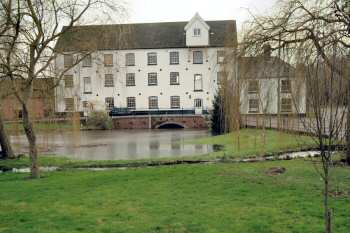 |
|
31st
December 2002
|
4th
February 2004 |
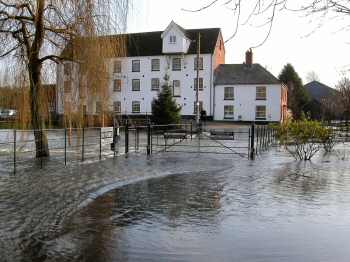 |
|
Flood
after the snow 2nd February 2004
|
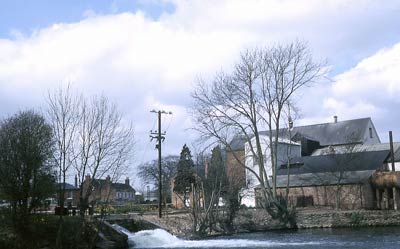 |
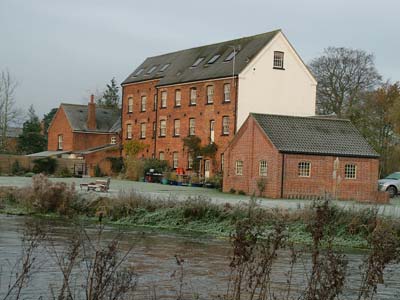 |
Rear of mill April 1967 |
Rear of mill 20th November 2004 |
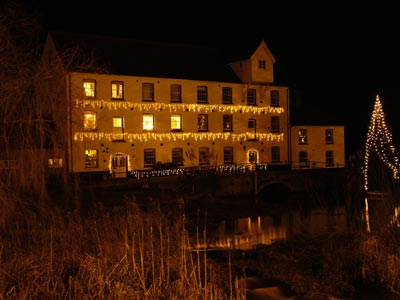 |
|
7th
January 2005
|
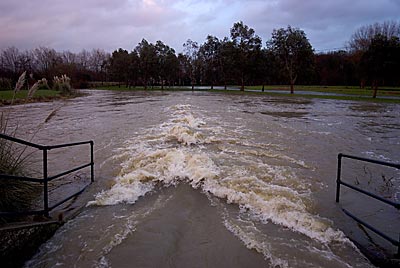 |
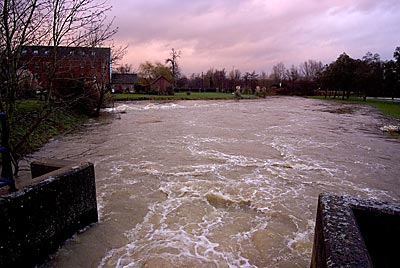 |
Bypass nearest mill 17th January 2008 |
Bypass furthest from the mill 17th January 2008 |
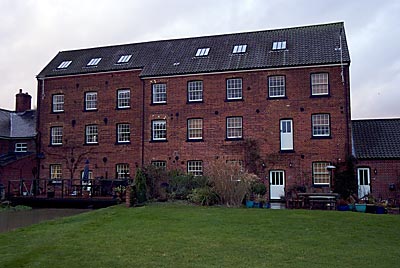 |
Rear of mill 17th January 2008 |
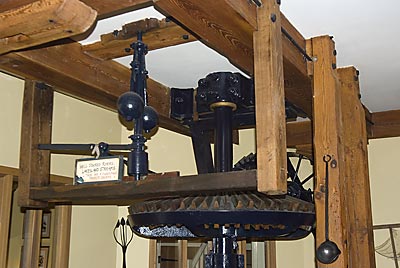 |
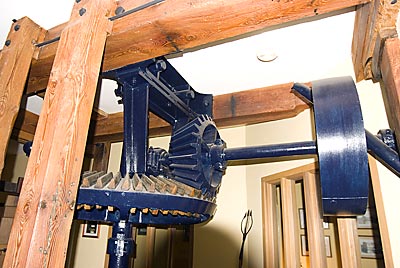 |
Crown wheel and tentering gear 17th January 2008 |
Auxiliary drive 17th January 2008 |
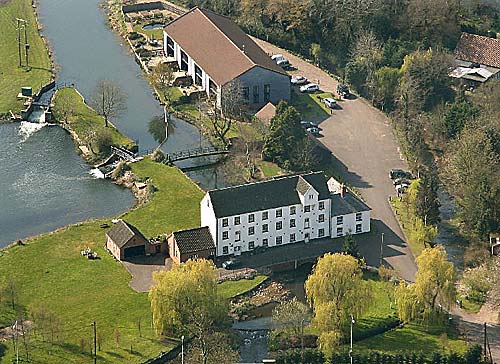 |
8th April 2007 |
|
Lenwade Mill - An appraisal of flood defence options was undertaken at this mill where the
existing manual sluice gates were in a poor condition and likely to fail. Options to improve
river ecology were also assessed. One of the options considered in this appraisal was the
removal of the sluices and installing of 3 gravel weirs upstream. However, the result of this
would be to restore the channel to create a steep section of watercourse that is quite out of
character with the river, and the impoundment upstream of the existing mill structures would
be retained. As a consequence, this option was not favoured and, although the sluices were
automated in 2004, it was engineered so that water levels could be managed in line with
future recommendations on water level management. An report on environmental options for
this site was prepared on behalf of the River Restoration Centre by Holmes (2002). |
Mill ownership and water rights |
|
5.28 The Environment Agency does not own all of the mills or water rights at control structures along the River Wensum SSSI (Table 6). Where private mill rights exist, the Environment Agency has limited powers to control their operational regime and retention levels. However, during initial contact with stakeholders, some mill owners were supportive of the concept of river restoration and were prepared to consider options for altering the future water management regime on impounded river reaches. 5.29 None of the mills are now used for their original purpose and only at Lenwade, Bintry and Elsing have the undershot water wheels been retained. Whilst owners can vary the retained water levels within the old milling limits, the general practice is to hold the water at a relatively high level. This is largely for aesthetic reasons (in order to maintain an expanse of water upstream of the mills) but also due to increasing levels of siltation of the mill pools. 5.30 The fragmentary nature of mill ownership is highlighted during periods of high flow. Each mill owner operates their controls to evacuate floodwaters, often without reference to owners either upstream or downstream. This emphasises the need for improved communication between mill owners/operators and riparian owners/residents. Given the significance of mills to restoration plans on the River Wensum, a potential constraint relates to the willingness of mill owners/operators to accept/implement changes in water levels, structures and channel works. 5.31 Conversely, mill owners may regard the development of the River Wensum Restoration Strategy as an opportunity for funding to modify structures that might be regarded as a liability in terms of maintenance, operation and health and safety. River Wensum Restoration Strategy - Natural England |
| N.B. Bintry Mill's wheel was removed in 1947 and Lenwade's c.1948. Elsing Mill's wheel had no paddleboards remaining by 2003 and was thus unable to impede the flow of water - JJN |
Mills |
|
6.16 The mill structures have a profound influence on the river system in the Wensum catchment. If high retained water levels continue upstream of the mills, they would form a significant constraint on the effectiveness of river restoration. Physical modifications at mill sites should aim to restore a more natural longitudinal profile to the river and to remove or reduce physical barriers to the movement of fish and wildlife. Whilst historically a number of mills have been in existence for centuries these have always very actively stored and released water and the cessation of working of the mills in combination with dredging has had a significant impact. 6.17 The recommended actions at mill structures are shown in Table 9. At a number of sites there is no mill building and removal of water level control structures would be the desired course of action. However, often there are multiple channels at a mill site and it is likely that some hydraulic controls would be needed to maintain a split of flows to all channels. These would probably take the form of a fixed crest and a natural chute that would allow the passage of fish and woody debris. At locations where the water level control structures are part of the historic mill building, there is often a variety of passageways and the best way to lower levels will need to be identified using more detailed survey. Initial action can be taken at low cost by merely adjusting operating levels using the available gates and stop boards. The reduction in head that could be achieved at a typical dry weather flow is also summarised in Table 9. The estimated maximum reduction in backwater length through changing the operational level of the sluices (that is, without the need for major engineering works) is 18km. This would reduce the length of the River Wensum SSSI affected by backwater from mills from 67% to 40%. To achieve this it would be necessary to ensure that no channels downstream of gates or fixed weirs are affected, but this could be a cost effective start to the Wensum restoration. 6.18 It is likely that at some locations, where the channel course has been altered and the mill channel is significantly higher than the natural channel, the main flow could be diverted upstream of the current mill location. Maintaining some flow to the original mill weir is likely to be preferable for aesthetic and heritage reasons, so by-passing is likely to be required in conjunction with lowering of the mill weir. Sites where such a solution is envisaged are at Great Ryburgh and Lyng. 6.19 The control structures at Costessey, Swanton Morley and Fakenham are used for flow gauging by the Environment Agency. Lowering these weirs may mean that the existing gauging arrangements will need to be replaced by other methods, such as ultrasonic techniques. The weir on the main channel at Swanton Morley has a two stage drop and a significant reduction in water level could be achieved there without affecting flow gauging through the bridge. 6.20 A former mill known as Gogg's Mill near to Fakenham was removed as part of the drainage improvement works of the 1950s. The channel upstream of the mill has narrowed significantly through the accretion of silt berms, and provides a good case study of the extent to which natural recovery can help restore natural river form and function. 6.21 As part of the River Wensum Water Level Management Plan being prepared by Entec (2007) the views of some private owners on changes in operating level have been canvassed. In broad terms this is not opposed, but there is concern to maintain an attractive setting incorporating some mill pond in line with the historical context particularly at: 1) Elsing 2) Great Ryburgh 3) Bintree 4) North Elmham 5) Lenwade. 6.22 A reduction in the retained water level at mills may constrain the ability to direct water through all the existing channels at mill sites, should this still be required, there may be a need to carry out physical modifications to some of the subsidiary water level control structures. River Wensum Restoration Strategy - Natural England, 26th June 2009 |
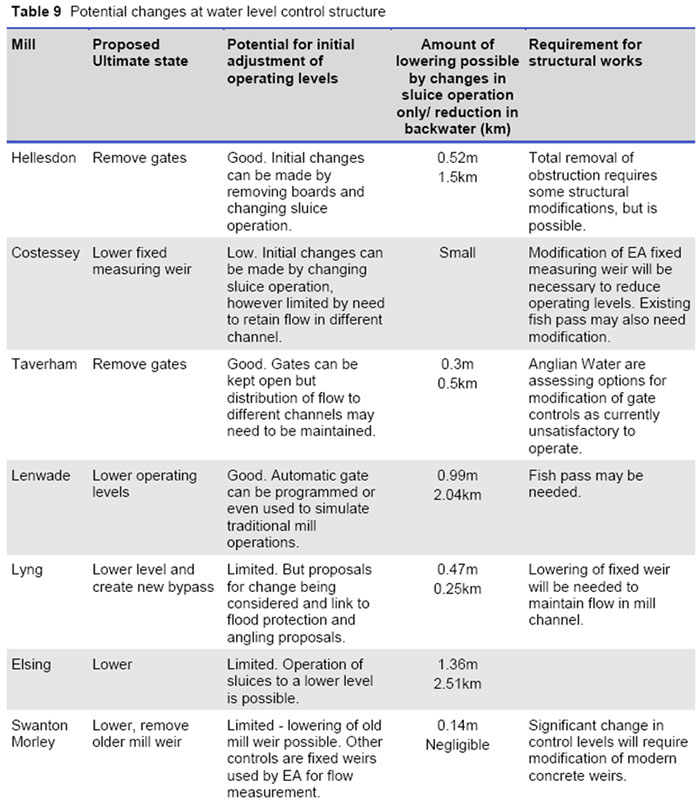
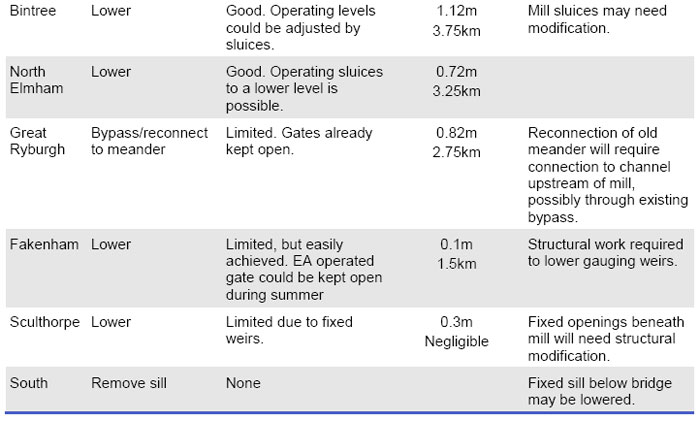
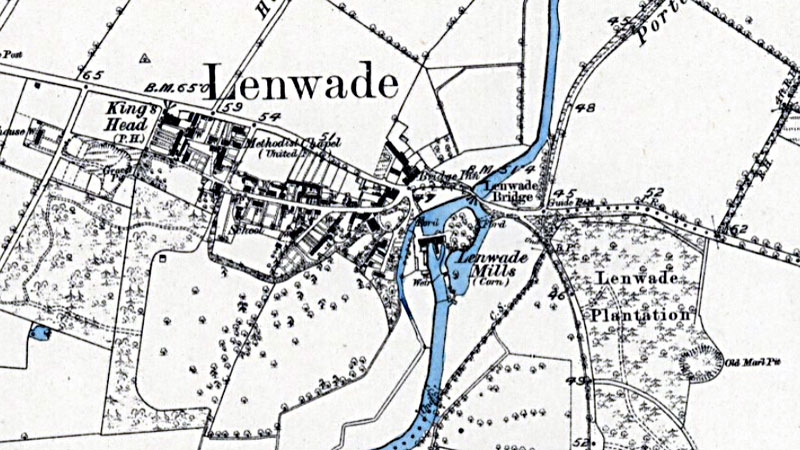 |
O. S. Map 1881-82 Courtesy of NLS map images |
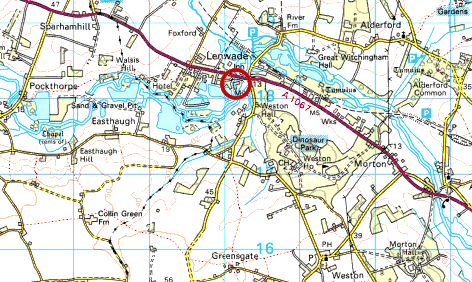 |
O.S. Map 2005 Image reproduced under licence from Ordnance Survey |
|
1782: Robert Beeston, miller
October 2014: Mill advertised for sale by Fine & Country for c.£665,000 |
If you have any memories, anecdotes or photos please let us know and we may be able to use them to update the site. By all means telephone 07836 675369 or
|
| Nat Grid Ref TG 10171820 | Copyright © Jonathan Neville 2003 |